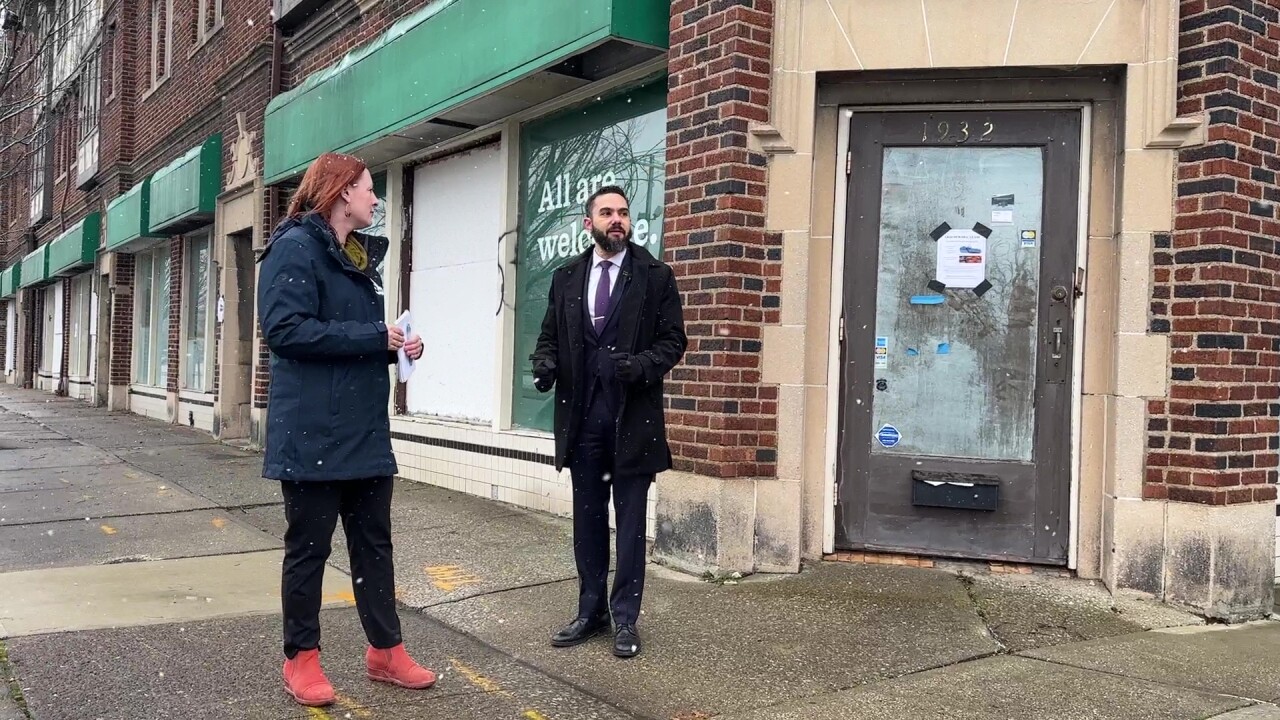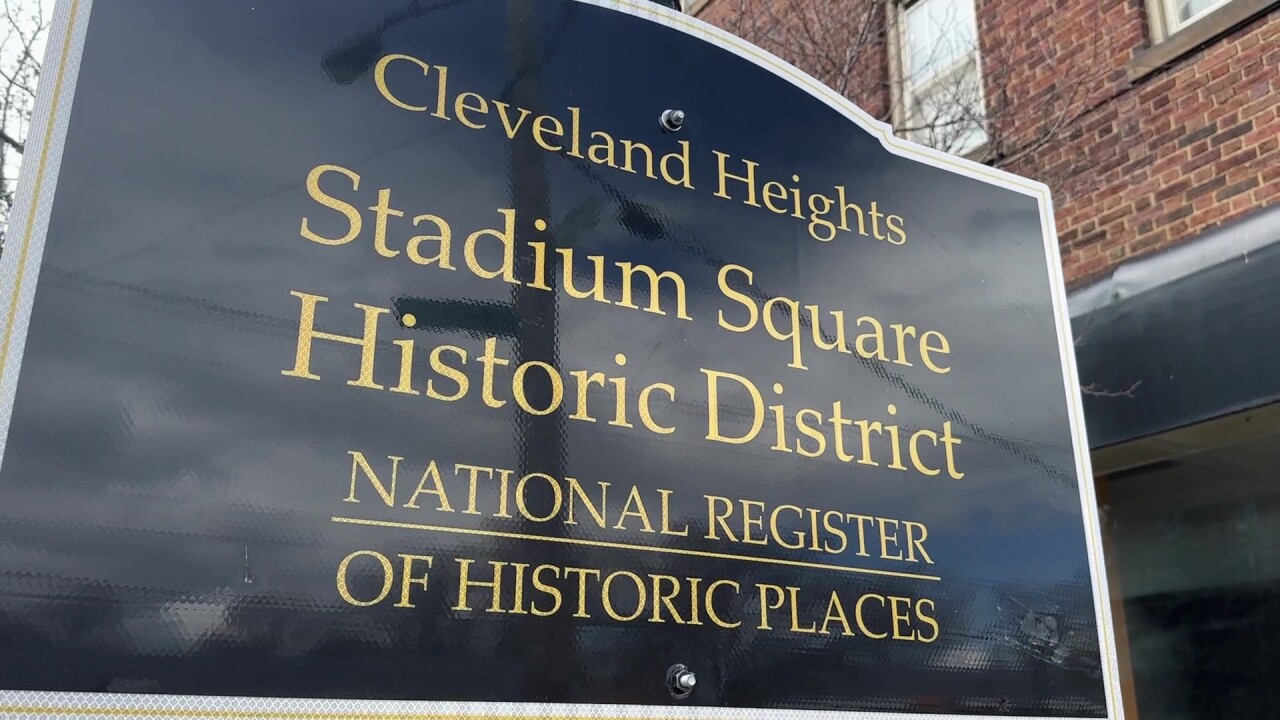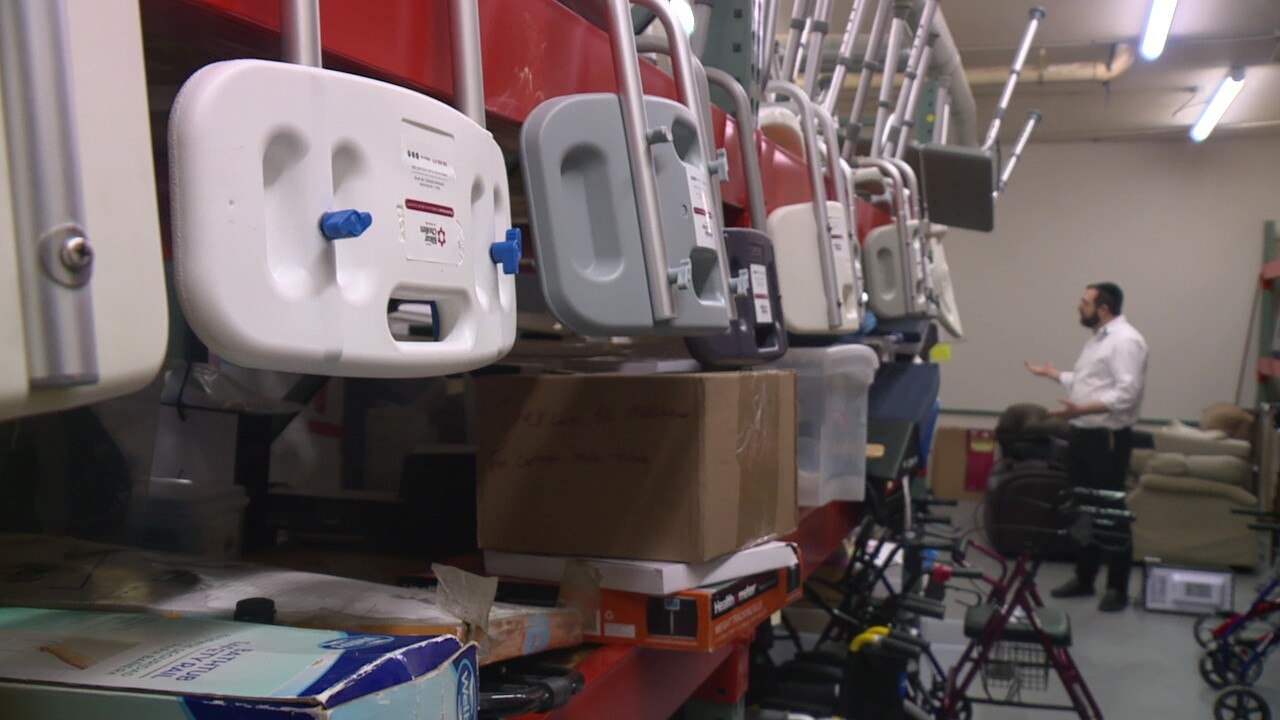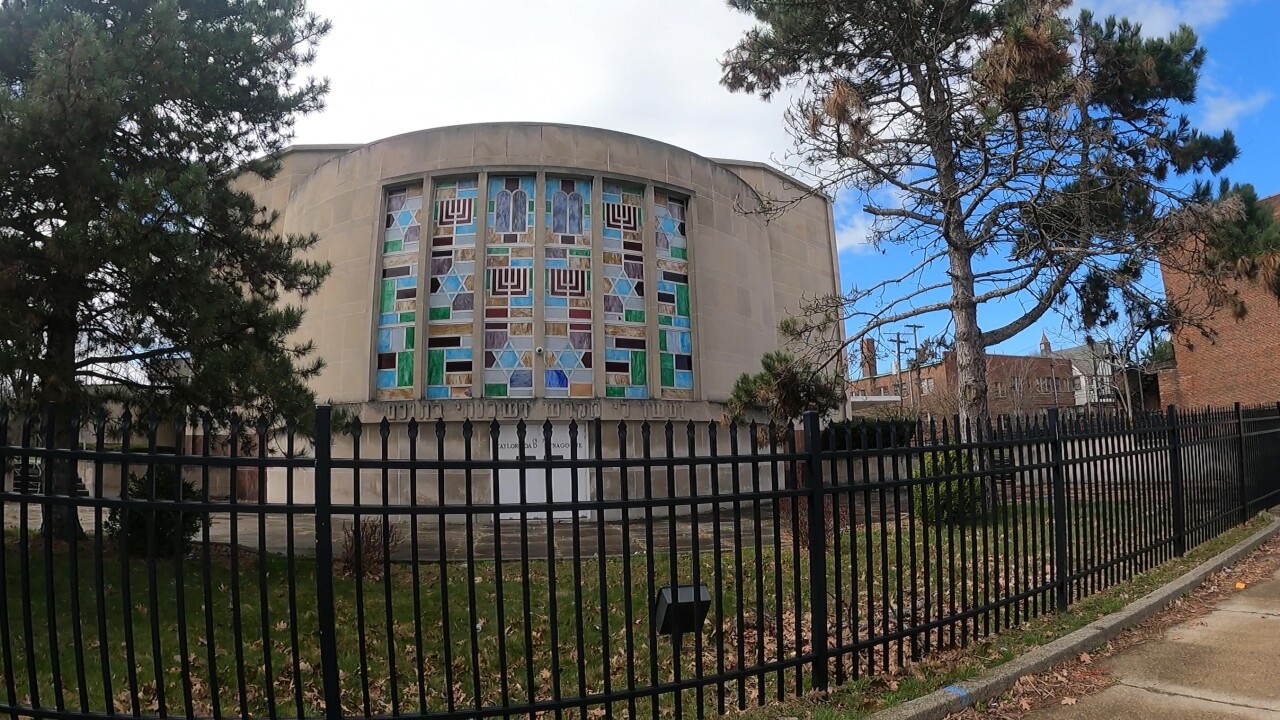CLEVELAND HEIGHTS, Ohio — Through the front windows of her architecture business, Michelle Kolbe sees cars slice by on South Taylor Road.
“South Taylor right now is a road to get through,” she said. “From wherever you’re coming from, to wherever you’re going to. It’s not a destination.”
That’s about to change.
A local real estate developer just acquired three vacant buildings down the street, near the eastern end of Cain Park. Now those buildings, historic Tudor Revival structures, will become 44 apartments, with retailers and live-work spaces downstairs.
It’s the first phase of a potential $100 million project in a diverse but downtrodden business district. This week, Cleveland Heights City Council approved key public financing legislation to advance the Taylor Tudors deal.
“This will be an example for us to continue to follow,” said Mayor Kahlil Seren, who became the city’s first elected chief executive in 2022 following a government overhaul.
“Based on the history in Cleveland Heights, the history of a lack of development for so long, people are eager to see things happening here,” he added.

WXZ Development’s vision extends beyond the historic buildings. Renderings show new apartments, restaurants and offices across the street, with a 464-space garage tucked behind them. Today, that’s the site of an aging strip shopping center.
A troubled synagogue immediately north of Cain Park could become apartments and a performance space – an indoor counterpart to the 1,500-seat amphitheater down the hill. WXZ’s plans also call for new for-sale townhouses in the neighborhood, a pedestrian plaza and a reimagined entrance to the park.

That entire plan might take five years to pull off, said developer Matthew Wymer. And it will require ongoing collaboration with the city, which laid the groundwork for change.
Cleveland Heights acquired the Taylor Tudor buildings out of foreclosure and state forfeiture over several years in a patient process helped along by the Cuyahoga Land Bank.
Officials added the properties to the National Register of Historic Places as part of a broader historic district called Stadium Square. That designation made the project eligible for federal and state tax credits for historic preservation to help pay for costly restoration.

The city chose WXZ as the developer in 2022 after soliciting proposals.
This year, council applied new zoning along South Taylor with the goal of making the corridor feel more walkable, welcoming and cohesive.
The Northeast Ohio Areawide Coordinating Agency, a regional planning agency, recently approved a $385,000 grant for Cleveland Heights. That money will flow toward new crosswalks, bicycle lanes and efforts to slow traffic.
“It’s really going to be a boon for the community,” said Kolbe, one of the founders of evoDomus, a business that designs custom modular homes.
She moved to Cleveland Heights in 2009 and opened her business on Taylor in 2017. Now, she and her children, two teenagers, are eagerly awaiting new investments in the area.
Kolbe is hoping for more dining options and, perhaps, an ice cream shop.
“Or lunch. Lunch would be huge,” she said.

Up the street, salon owner Nodja Dudley would love to see more places to browse.
“It kind of diminishes the look when you have so many empty spaces,” she said.
She opened Peerless Hair Salon almost eight years ago in a building where most of the other tenants serve the area’s large Orthodox Jewish community.
One of her neighbors, Rabbi Alan Joseph, said safety is his top priority. He’s looking forward to new apartments and businesses – and more eyes on the street.
“Knowing that it’s populated and taken care of is a big deal for us,” Joseph said.
He’s the executive director of Bikur Cholim of Cleveland, which he described as “a Jewish Ronald McDonald House.” The nonprofit delivers Kosher meals, loans out medical equipment and provides lodging for Jewish families near Cleveland’s major hospitals.
Bikur Cholim moved to South Taylor in 2018 and recently expanded. But Joseph and his family have lived in Cleveland Heights for much longer.
“I’ve been here 15 years, and I kind of haven’t seen much,” he said of the development. “But I’m hopeful that things will really change.”

The city expects to break ground this summer on a new entrance to Cain Park from South Taylor. A staircase-and-ramp system – called a stramp – will cascade down the hill, improving access for people with disabilities and creating new places to sit.
“I can’t wait until we see it in real life,” Seren said. “It’s gonna be phenomenal.”
Cleveland Heights is paying for that project with $1.5 million in federal pandemic-recovery funds. The city also has set aside $1 million to fix up the nearby amphitheater.
Wymer, the developer, said the park is what initially drew him to the neighborhood.
“I noticed it when I would drive past … and I would look over and really just kind of think to myself, ‘it’s a shame that there’s not more going on there,” he said.
“I think it can be a lot more,” he added. “And offer a lot more.”
The city sold the Taylor Tudors to WXZ for $1, according to public records.
Cleveland Heights City Council approved a 30-year tax-increment financing deal for the project. That agreement redirects new property-tax revenues from the development to help pay for construction – along with public investments like landscaping and sidewalks.
The Cleveland Heights-University Heights City School District also signed off on the arrangement. The schools will receive 24% of the new property-tax revenues.
“It is the vote of confidence we needed and also the authority we needed to start a process of rebuilding our city,” Seren said of the public approvals.
Wymer aims to start the second phase of construction before the Taylor Tudors are done. But the precise timing and the order of the projects isn’t clear yet.

The neighboring Taylor Road Synagogue, that potential performance space, is a challenge. It is tied up in a legal fight and burdened by more than $6.4 million in unpaid property taxes, interest and penalties.
Late last year, a Cuyahoga County judge ordered the property to be forfeited to the state. But the owner appealed, keeping the synagogue’s future in limbo.
“What we anticipate, and what we hope for, is a resolution to that tax foreclosure that connects the synagogue and that property to this redevelopment,” Seren said.
Meanwhile, he hopes progress sends a message that the city is ready to move into the future – even as it preserves its past.
“If you are not growing and evolving, then you’re stagnating,” he said. “Cleveland Heights has felt some stagnation for quite a while now. And I’m happy to be a part of reversing that trend.”




